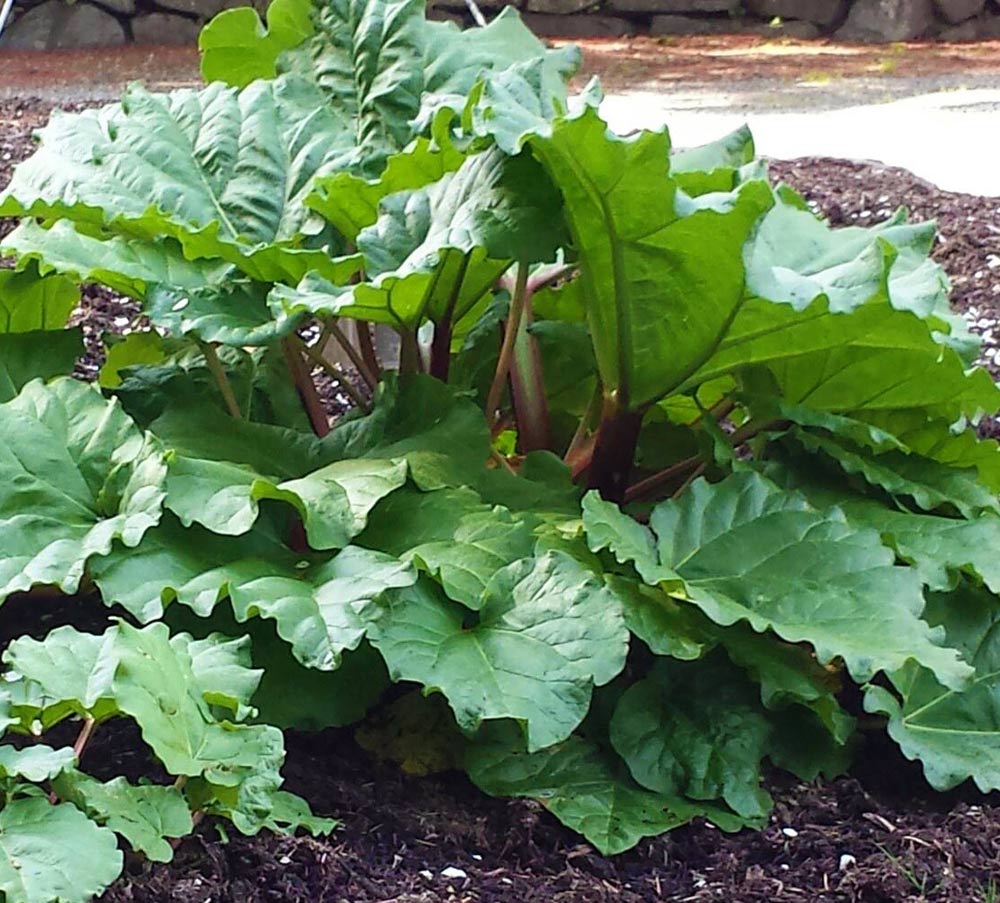
Rhubarb
Rheum × hybridum
Basic Information
🌿 Family: Polygonaceae🗺️ Zone: 3-8
Other Names:
- Garden Rhubarb
🌡️ Ideal Temperature : 60°F – 75°F
🔥 Heat Tolerance: Up to 90°F
❄️ Cold Tolerance: Down to -20°F
🌱 Type: Perennial
Layers
- Herbaceous
Functions
- Edible
- Mulcher
- Erosion Control
Pests
No pests associated with this plant.
Description
Rhubarb (*Rheum × hybridum*) is a robust, herbaceous perennial known for its large, triangular leaves and thick, fleshy petioles (stalks) that range in color from green to deep red. The plant can reach up to 1 meter (3 feet) in height and width. Notably, while the stalks are edible and prized for their tart flavor, the leaves contain high levels of oxalic acid and are toxic if consumed. Rhubarb thrives in well-drained, fertile soils with a slightly acidic to neutral pH (6.0-7.0) and requires a period of winter dormancy with temperatures below 40°F (4°C) to stimulate vigorous spring growth.
✂️🫘 Methods to Propagate:
Rhubarb is commonly propagated through crown division. In early spring or late fall, select a healthy, established plant and carefully dig it up. Using a sharp, clean knife, divide the crown into sections, each containing at least one strong bud and a portion of the root system. Replant the divisions promptly, spacing them about 90-120 centimeters (3-4 feet) apart to allow for mature growth.
🌞💧 Sun and Water Requirements:
Rhubarb flourishes in full sun, requiring a minimum of 6-8 hours of direct sunlight daily. In hotter climates, partial afternoon shade can help prevent stress. Consistent moisture is essential; provide approximately 2.5 centimeters (1 inch) of water per week, adjusting for rainfall. Mulching around the base helps retain soil moisture and suppress weeds.
🧑🌾👩🌾 When to Harvest:
Refrain from harvesting rhubarb during its first growing season to allow the plant to establish. In the second year, harvest lightly, selecting only a few stalks. By the third year, a full harvest can commence. Harvest period typically spans 8-10 weeks, starting in spring. To harvest, grasp the base of the stalk and pull it away with a gentle twist. Avoid cutting the stalks, as this can leave a stub prone to decay. Cease harvesting by early summer to enable the plant to rebuild energy reserves for the next season.
Purpose
In permaculture, rhubarb serves multiple functions:
- **Edible**: Provides tart-flavored stalks rich in vitamins K and C, used in various culinary applications.
- **Mulcher**: Large leaves can be cut and used as mulch to suppress weeds and retain soil moisture.
- **Erosion Control**: Extensive root systems help stabilize soil, reducing erosion on slopes and embankments.